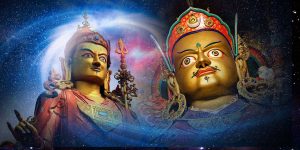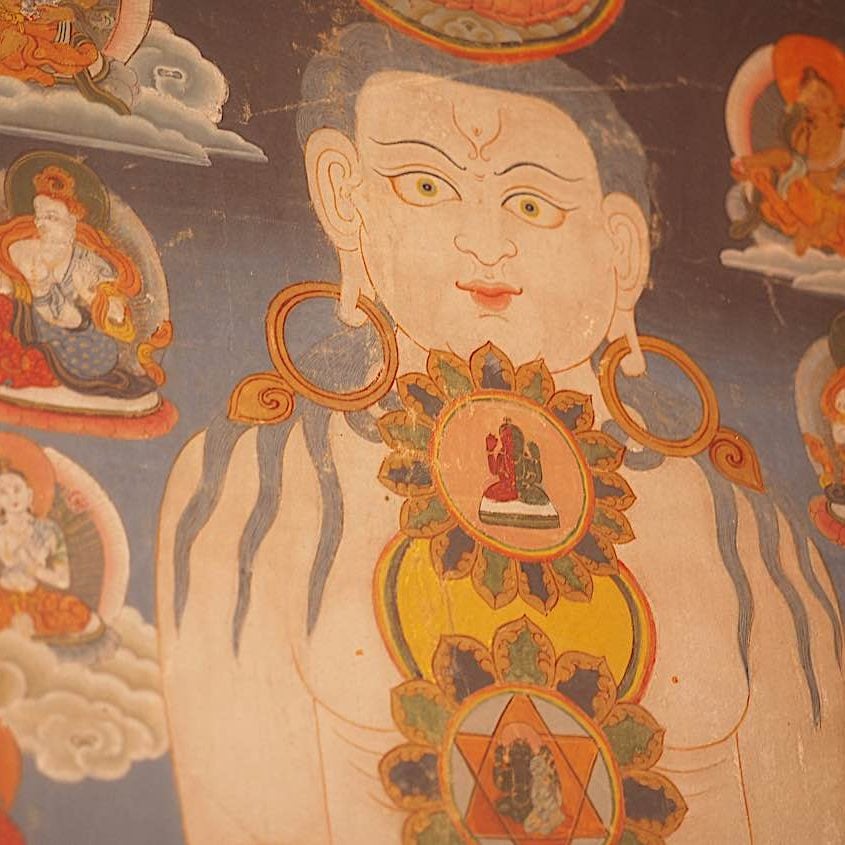Review: Gelug Mahamudra Eloquent Speech of Manjushri by Zasep Tulku Rinpoche; making the profound and complex meditation method concise and clear
In a new book, Gelug Mahamudra, Eloquent Speech of Manjushri, Zasep Rinpoche unpacks the profound subject of Mahamudra meditation — the “very heart of Buddha’s teachings” — for the modern western Buddhist student.
Drawing on many decades of teaching experience in the west, he distils volumes of knowledge on Mahamudra — the most advanced and significant teachings in Vajrayana — into a concise yet comprehensive 300 pages.
He writes in the same style as he teaches, with a focus on making this vast and deep method easy to digest and comprehend. With the aid of original illustrations from Ben Christian — which include channels and chakras diagrams, beautiful thangkas of Manjushri and other Buddhas, and yoga postures for sitting — Rinpoche compresses centuries of practice
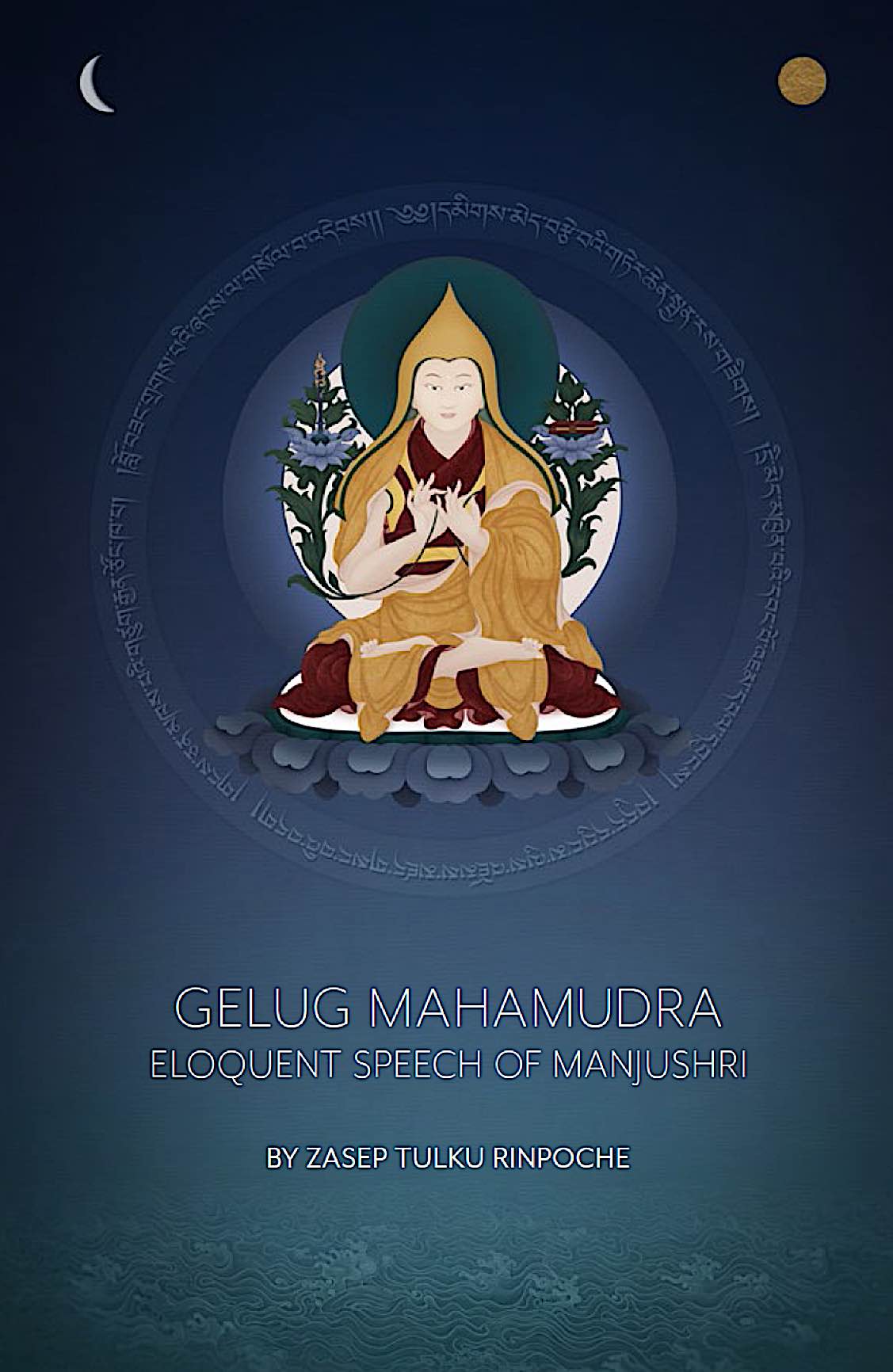
commentary into fourteen short chapters. Covering everything from the preliminaries — Refuge, Bodhicitta, Mandala offerings, Vajrasattva, Guru Yoga — through to Samatha Mahamudra, Vipassana Mahamudra and finally on to Tantric Mahamudra, Rinpoche empowers the student to advance their practice with the “very heart of Buddha’s teachings.”
As an Amazon Associate, Buddha Weekly may earn from qualifying purchases.
There are extensive how-tos and commentaries in this ultimately very practical book, especially the chapters on Samataha and Vipassana meditation. Rinpoche is well-known for the clarity of his in-person teachings on these important methods, and he brings that practicality. Reading this book, has the “flavor” of receiving a personal teaching from a meditation master.
Also helpful are the four photos and fourteen illustrations meant to assist practice and visualization with deity thangkas, inner body maps (for Tantric Mahamudra) and yogic postures.
Note: This was an advance review — the book is now released in paperback and will soon release in Kindle e-book. Amazon>>
- Author: H.E. Zasep Tulku Rinpoche
- Editor: Amanda Buckley
- Illustrations: Ben Christian
- Design: Green Scribble
- Paperback: 304 pages
- Publisher: Wind Horse Press (February 15, 2019)
- Language: English
- ISBN-10: 0646995073
- ISBN-13: 978-0646995076
- Price $39.00
Related
- To read chapter one book excerpt, please see our earlier feature>>
- Paperback now available on Amazon>>
- Paperback now available in Canada>>
- Paperback now available in the United Kingdom>>
- English Paperback now available in Germany>>
- English Paperback now available in Japan>>
- English Paperback now available in Italy>>
Who is this book for?
This is a must read for Buddhists of the Gelug tradition, and a should read for many other Buddhists seeking insight into Shunyata (emptiness), or practicing Vipassana or Samatha.
“The very heart of Buddha’s teachings”
Mahamudra meditation and practice is “at the very heart of Buddha’s teachings,” begins H.E. Zasep Rinpoche in a new book from Wind Horse Press. In his introductory chapter, he explains why Mahamudra is a “need” not a want practice for Buddhists:
“Mahamudra practice slows us down so we can see things as they really are. Mahamudra reveals the ultimate nature of the mind, intrinsically pure and empty of inherent nature: pure awareness, luminous and spacious
— clarity and cognisance.”
Although Rinpoche covers Mahamudra from the point of view of the Gelugpa tradition, many of the meditations are useful to any Buddhist, of any school. Mahamudra is both an ultimately simple practice, and the pinnacle of Vajrayana practices. Rinpoche explains in chapter 1: ” the actual Gelug technique of Mahamudra is deeply profound, and in particular, the Tantric Mahamudra is supreme.”
As an Amazon Associate, Buddha Weekly may earn from qualifying purchases.
One question Rinpoche answers (hint, in chapter 9) is an important one:
“Why bother taking initiations, doing Tantric practice, doing all these foundation practices, Vajrasattva mantras, Guru Yoga. Why bother doing prostrations, three-year retreats, counting millions and millions of mantras. Why bother? Why not just sit and do the Mahamudra?”
His answer will surprise many, and clarify for others what they already intuitively grasped.
NOTE: The Sutra Mahamudra content is open for any student. Some of the advanced Tantric practices in the last chapter require initiation.
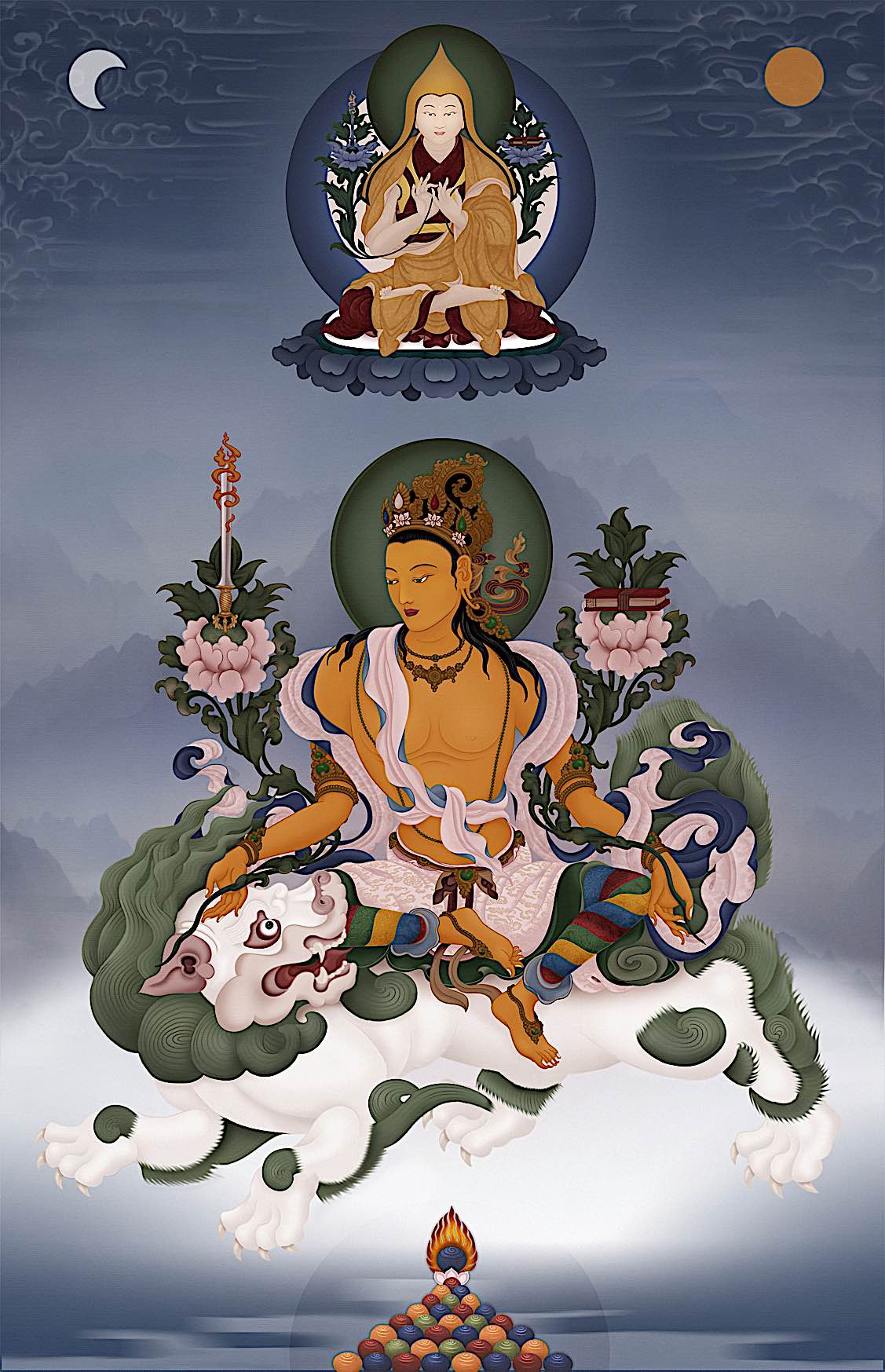
Related
- To read chapter one book excerpt, please see our earlier feature>>
- Paperback now available on Amazon>>
- Paperback now available in Canada>>
- Paperback now available in the United Kingdom>>
- English Paperback now available in Germany>>
- English Paperback now available in Japan>>
- English Paperback now available in Italy>>
The Three Grounds of Mahamudra
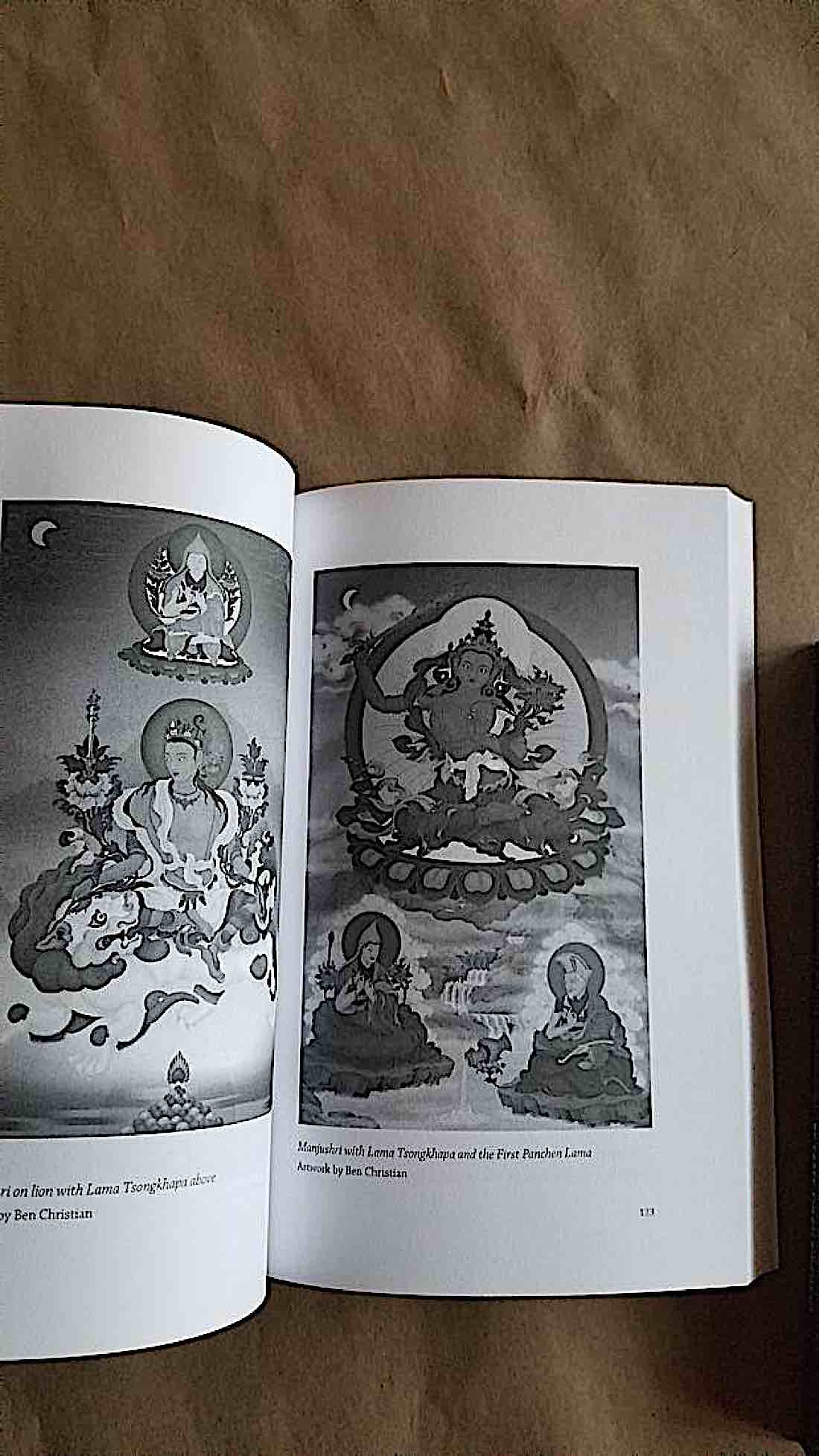
The book is a helpful commentary, supplemented with illustrations, and a very useful guide for students. Although the reader may not be able to engage in some of the practices without teacher-guidance — such as the Tantric Mahamudra methods — the instructions are very thorough and clear. In the case of Tantric Mahamudra, he gives detailed information, but with the caution: “to obtain the empowerments necessary for Tantric practice.”
Rinpoche explains the three levels of Mahamudra in the book:
- Ground Mahamudra
- Path Mahamudra
- Result Mahamudra.
He explains in chapter 1: “When we meditate, we recognise the nature of emptiness is always there; the realisation of emptiness dispels defilements. With the realisation of emptiness one is able to perceive all mental defilements and their nature of emptiness.”
Later he eloquently summarizes: “Mahamudra meditation is awareness and understanding of the true nature of mind; it is spacious, without beginning or end. It is like observing the sky without the trace of birds, or the criss-cross of jet planes. You can merge your consciousness in the state of Mahamudra, beyond words and thoughts. The true nature of the mind is raw or naked awareness. It is an uncovered, untamed and unaltered state, without fabrication.”
Lama Tsongkhapa’s instructions in Samatha: “Calm abiding mind”
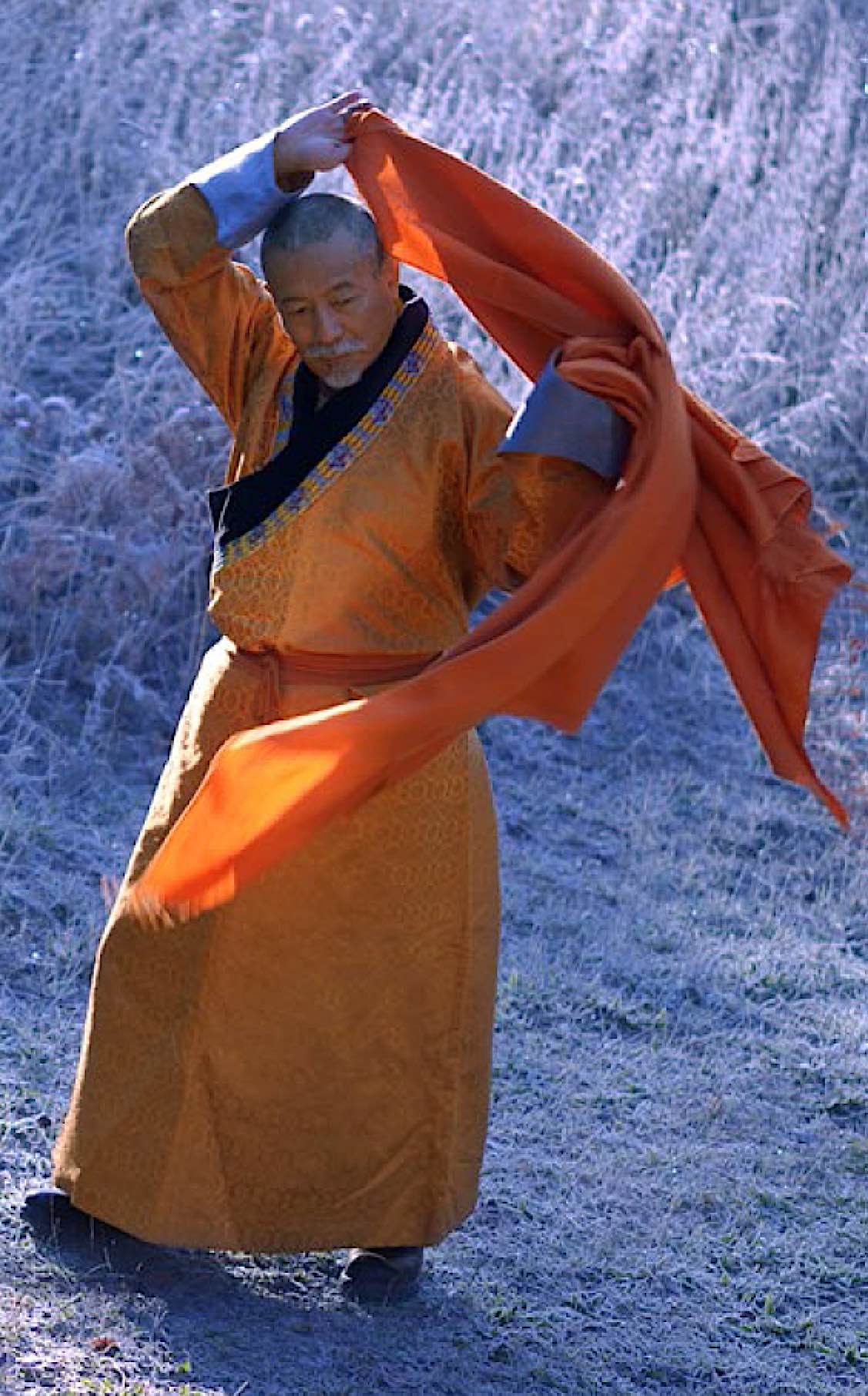
Rinpoche covers the two types of Sutra Mahamudra: Samatha and Vipassana. He explains:
“There are two types of Sutra Mahamudra: Samatha Mahamudra, and Vipassana Mahamudra. The wisdom of seeing the true nature of the mind with a calm abiding mind is Samatha Mahamudra. The wisdom of seeing the true nature of the mind through insight and an analytical mind is Vipassana Mahamudra.”
The instructions in chapter 9, on Sutra Samatha Mahamudra, are “based on the teachings of the holy Gelug Mahamudra masters: Lama Je Tsongkhapa; the First Panchen Lama Losang Chokyi Gyaltsen; and Gungthang Tenpe Dronme.”
“What is mind?”
Rinpoche explains how Lama Je Tsongkhapa and the First Panchen Lama taught the method of “seeking the correct view after having gained meditative samadhi.”
He adds, ” In Mahamudra practice it is always good to start with the question, what is mind? The ultimate nature of the mind is clear light, defilements are temporary. Mind is not within the mind, but it is clear light. Mind has no beginning and no end. All phenomena are manifested or produced from the mind. This is the teaching of the Buddha and all the great masters.”
Rinpoche compares the mind to the sky, “free of limitations” and also “like a diamond, its true nature is clear and precious.”
He explains the deep topic of “six primary minds.” Rinpoche also offers the famous verses of Phagmo Drupa, and offers a complete commentary on them:
Mahamudra is the state of non-dual awareness
There are three aspects
Essence, nature and characteristic.
The essence is emptiness (of arising, ceasing or conceiving).
Nature is unobstructed lucidity,
Characteristic is the diverse appearances on the levels of Samsara and Nirvana.
After commentary, Rinpoche gives concise and very clear how-to instructions for your Mahamudra meditation.
The entire chapter 9 is a profound and powerful stand-alone teaching on Mahamudra Samatha, invaluable to any student. He gives very clear insights into how-to practice, including the “six examples given by the Gaden Mahamudra masters”, such as:
“Resting the mind like an innocent child”
“Resting the mind like a bird in the sky”
“Resting the mind like soft and lightly-matted wool”
As an Amazon Associate, Buddha Weekly may earn from qualifying purchases.
Superior insight: guided meditation in Vipassana Mahamudra
There are many practical and insightful chapters in the book, including an amazing guided meditation on Vipassana Mahamudra.
Rinpoche explains why Vipassana is critical:
“Vipassana Mahamudra is essentially a meditation on emptiness and Shunyata. Without the realisation of Shunyata you cannot cut the root of Samsara. As I have mentioned before, Phagmo Drupa asked Gampopa what was the root of Samsara; the answer was ‘ordinary mind’.
“When you know the root of Samsara, you have to pull out that root completely, otherwise it will keep growing back. The best way to achieve this is to meditate on emptiness through Vipassana Mahamudra.”
An extensive commentary, including a complete teaching on Shunyata (Emptiness), together with a guided meditation, make this chapter worth the price of the book.
The Fascination with Tummo
Up until this point in the book, Rinpoche has taught based on Sutra Mahamudra. In chapter 13 he teaches based on Tantric Mahamura. Rinpoche defines it as:
“Tantra Mahamudra is the union of bliss and emptiness. Owing to Sutra, we are able to discover emptiness, and owing to Tantra we discover true bliss . The combination and union of these two becomes the highest Mahamudra, Tantra Mahamudra.”
Tummo practice is the best-known and a most-sought after teaching and practice from Tantric Mahamudra. It conjures images of yogis, dressed only in a light cloth, meditating on a snow-capped mountain, keeping warm with only their inner meditated tummo heat. Rinpoche explains the real significance of these practices and gives a complete explanation and commentary. He gives this commentary on Tantric Mahamudra with a caution:
“But I advise you to consult with your own Guru or a qualified master. There is no point trying to practise Tantric Mahamudra if you are not qualified. If you do the practice without careful guidance by the Guru it would do more harm than good. I have met many people in the West who would like to jump right into the highest and most advanced practices of Tantra, and the mystic and magical Tummo-Agni yoga practice, without a solid foundation.”
Rinpoche clarifies many points advanced students may have struggled with in their practices, particularly regarding visualization of the channels, meridians, chakras and winds.
In the beginning of the chapter on details of Tantric Mahamudra, Rinpoche explains:
Tantra is not for everyone, especially completion stage and Tantric Mahamudra. This practice required a lot of faith. One has to surrender to the Guru and Yidam. This is very hard to do in this day and age, particularly for Western Dharma students, mainly because of cultural conditioning. Lots of people are attracted to Tantric practice, especially the practice of the Six Yogas of Naropa . Many people in the West want an easy practice and a quick result. It is like a fast food mentality. If you practise without proper readiness, you are risking your mental and physical energy levels, and your meditation development. So please pay attention to this advice; as I have said in the last chapter, you need a Guru and to have made a decision on your lifelong Yidam.”
Recommended for serious students
Gelug Mahamuda, Eloquent Speech of Manjushri, by Zasep Rinpoche, is highly recommended for any serious student of Vajrayana Buddhism. It is a must read for students of the Gelugpa tradition. For all Buddhists, generally, it’s a good read, especially the chapters on Samatha and Vipassana.
As an Amazon Associate, Buddha Weekly may earn from qualifying purchases.
- To read chapter one book excerpt, please see our earlier feature>>
- Paperback: 304 pages
- Publisher: Wind Horse Press (February 15, 2019)
- Language: English
- ISBN-10: 0646995073
- ISBN-13: 978-0646995076
- Product Dimensions: 6 x 0.7 x 9 inches
About H.E. Zasep Rinoche
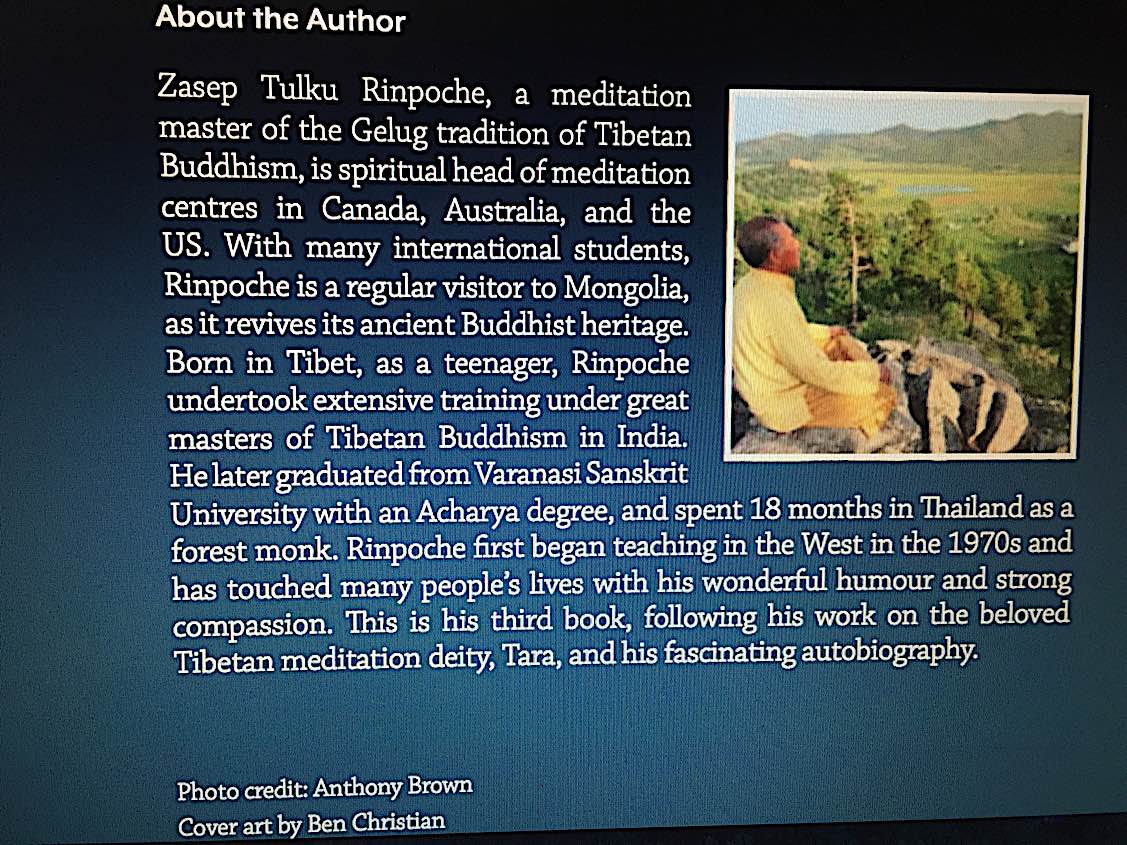
This is a rare opportunity to meet an eminent Tibetan Buddhist teacher. Venerable Zasep Tulku Rinpoche is a meditation master, and spiritual head of meditation centres in Canada, Australia and the US. With many international students, Rinpoche is a regular visitor to Mongolia as it revives its ancient Buddhist heritage.
Born in Tibet, as a teenager, Rinpoche undertook extensive training under great masters of Tibetan Buddhism in Tibet. After graduating from Varanasi Sanskrit University with an Acharya degree, he spent 18 months in Thailand as a forest monk. Rinpoche first began teaching in the West in the 1970s and has touched many people’s lives with his wonderful humour and strong compassion. This is his third book, following his work on the beloved Tibetan Meditation deity, Tara, and his fascinating autobiography.
More articles by this author

Guru Rinpoche is ready to answer and grant wishes: “Repeat this prayer continuously” for the granting of wishes

VIDEO: Vajrapani Vajra Armor Mantra: Supreme Protection of Dorje Godrab Vajrakavaca from Padmasambhava
Search
Latest Features
Please support the "Spread the Dharma" mission as one of our heroic Dharma Supporting Members, or with a one-time donation.
Please Help Support the “Spread the Dharma” Mission!

Be a part of the noble mission as a supporting member or a patron, or a volunteer contributor of content.
The power of Dharma to help sentient beings, in part, lies in ensuring access to Buddha’s precious Dharma — the mission of Buddha Weekly. We can’t do it without you!
A non-profit association since 2007, Buddha Weekly published many feature articles, videos, and, podcasts. Please consider supporting the mission to preserve and “Spread the Dharma." Your support as either a patron or a supporting member helps defray the high costs of producing quality Dharma content. Thank you! Learn more here, or become one of our super karma heroes on Patreon.
Lee Kane
Author | Buddha Weekly
Lee Kane is the editor of Buddha Weekly, since 2007. His main focuses as a writer are mindfulness techniques, meditation, Dharma and Sutra commentaries, Buddhist practices, international perspectives and traditions, Vajrayana, Mahayana, Zen. He also covers various events.
Lee also contributes as a writer to various other online magazines and blogs.






